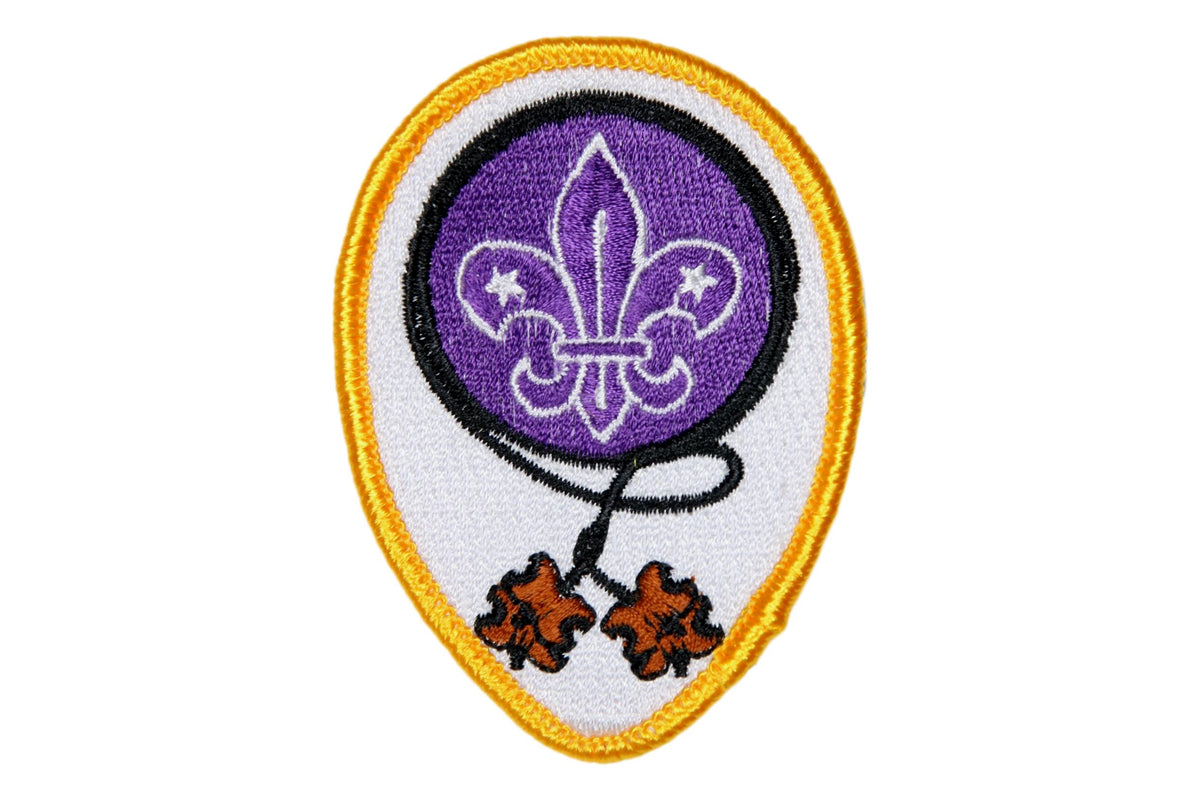Fleur-de-lis Beads Four Beads Patch Wood Badge Stuff
$ 3,45 $ 2,07
Proudly display this Wood Badge Beads patch to show your Wood Badge loyalty. This is a great gift for your Wood Badgers or Gilwellians at reunions or to give to your patrol as a Thank You for the great memories.
The Thong and Beads
In looking for a suitable recognition for the 19 men who completed the first Wood Badge course, the hero of the 217-day siege of the South African town of Mafeking in 1900 found among his old army trophies and souvenirs a long necklace of quaintly carved wooden beads. In 1888, during the African Zulu wars, Baden-Powell found the necklace in a hut that had been recently deserted by the African King Dinizulu (Dinny-Zulu).
He presented each man who had taken part in the camp with one of the beads. They were badges of wood. The beads gave the training its name – the Wood Badge Course.
These simple wooden beads signify the completion of the training course soon became one of the most highly prized possessions a scoutmaster could have. When the original beads ran out, the Gilwell training staff whittled others to keep the tradition established by Baden-Powell.
Two simple wooden beads knotted on a leather thong have come to signify that the wearer has completed the most respected scout training program and is dedicated to the highest standards of service.
Additional Beads
Additional beads are awarded to Wood Badgers who serve as part of a Wood Badge training team. One additional bead is awarded to Assistant Leader Trainers (Wood Badge staff) and two additional beads are awarded to Leader Trainers (Wood Badge course directors), for a total of four.
The Fleur-de-lis
The fleur-de-lis is the main element in the logo of most Scouting organizations, representing a major theme in Scouting: the outdoors and wilderness.
The three petals or leaves represent the threefold Scout Promise (Duty to God and Country, Duty to Self, Duty to Others) in much the same way as the three leaves of the trefoil represent the threefold promise for the Guides.
Robert Baden-Powell, the founder of the Scouting movement, explained that the Scouts adopted the fleur-de-lis symbol from its use in the compass rose because of it “points in the right direction (and upwards) turning neither to the right nor left since these lead backward again.
The two small five-point stars stand for truth and knowledge. Together their ten points represent the ten original Scout laws.
Product Dimensions: 3″
Prompt Shipping and Professional Packaging
Our long-standing partnership with UPS FedEx DHL and other international carriers gives us the ability to provide an array of shipping services. Our warehouse personnel are extremely skilled and will package your goods in accordance to our exact and precise specifications. Your products will go through an extensive inspection and will be securely secured prior to being shipped. Every day, we send thousands of packages to customers from all over the world. This is an indication of our determination to become the biggest online retailer in the world. Warehouses and distribution centers can be found in Europe and the USA.
Note: Orders that contain more than one item are assigned a processing time in accordance with the item.
Prior to shipment the items, our staff will carry out an extensive inspection of the items you purchased. Today, most orders will be shipped within 48 hours. The estimated delivery time is between 3 and 7 days.
Returns
Due to multiple parties such as the factory and the warehouse, we are unable to effectively manage inventory. The actual stock can be changed at any time. Be aware that it is possible for your order to be out of stock after you have made the order.
The policy is 30 days. We cannot exchange or refund your order after 30 days from the date of purchase.
Your item should be in its original packaging and in good condition. It must also not be used. You must have the item in the original packaging.
Related products
AW-Wood Badge
AW-Wood Badge
AW-Wood Badge
AW-Wood Badge
AW-Wood Badge
AW-Wood Badge
AW-Wood Badge
AW-Wood Badge
AW-Wood Badge
AW-Wood Badge
AW-Wood Badge
AW-Wood Badge
AW-Wood Badge
AW-Wood Badge
AW-Wood Badge
AW-Wood Badge
AW-Wood Badge
AW-Wood Badge
AW-Wood Badge
AW-Wood Badge
AW-Wood Badge
AW-Wood Badge
AW-Wood Badge
AW-Wood Badge
AW-Wood Badge
AW-Wood Badge
AW-Wood Badge
AW-Wood Badge
AW-Wood Badge
AW-Wood Badge
AW-Wood Badge
AW-Wood Badge


































